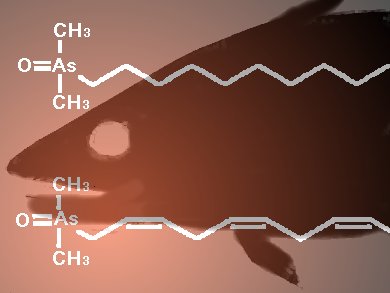Arsenic (As) is poisonous to almost all organisms. Seafood may contain a high concentration of As and, hence, is one of the main source of human exposure. However, much research done on the health risk of As consumed with food does not differentiate between various As species. Arsenosugars and arsenolipids (AsL) have not been considered in research, so far.
AsLs of the type As-containing fatty acids (AsFA) and hydrocarbons (AsHC) are also known to occur in seafood, but their identification and quantification is hampered by their hydrophobicity and their incompatibility with the solvent requirements for reversed-phase high-performance liquid chromatography (RP-HPLC) coupled with inductively coupled plasma mass spectrometry (ICP-MS).
Uriel Arroyo-Abad, BAM-Federal Institute for Materials Research and Testing, Berlin, Germany, and colleagues combined RP-HPLC-ICP-MS with electrospray ionization mass spectrometry (ESI-MS) and identified 17 different structures of AsL, as well as two entirely new AsFAs in canned cod liver samples. The total As concentration ranged from 2.6 to 5.5 mg As/kg. The AsL detected by RP-IPC-MS comprised 58 to 95 % of the total As content, indicating that AsL is a major class of As in commercial canned cod liver.
- Arsenolipids in commercial canned cod liver: An occurrence and distribution study
Uriel Arroyo-Abad, Jürgen Mattusch, Thorsten Reemtsma, Christian Piechotta
Europ. J. Lipid Sci. Technol. 2014.
DOI: 10.1002/ejlt.201400144



